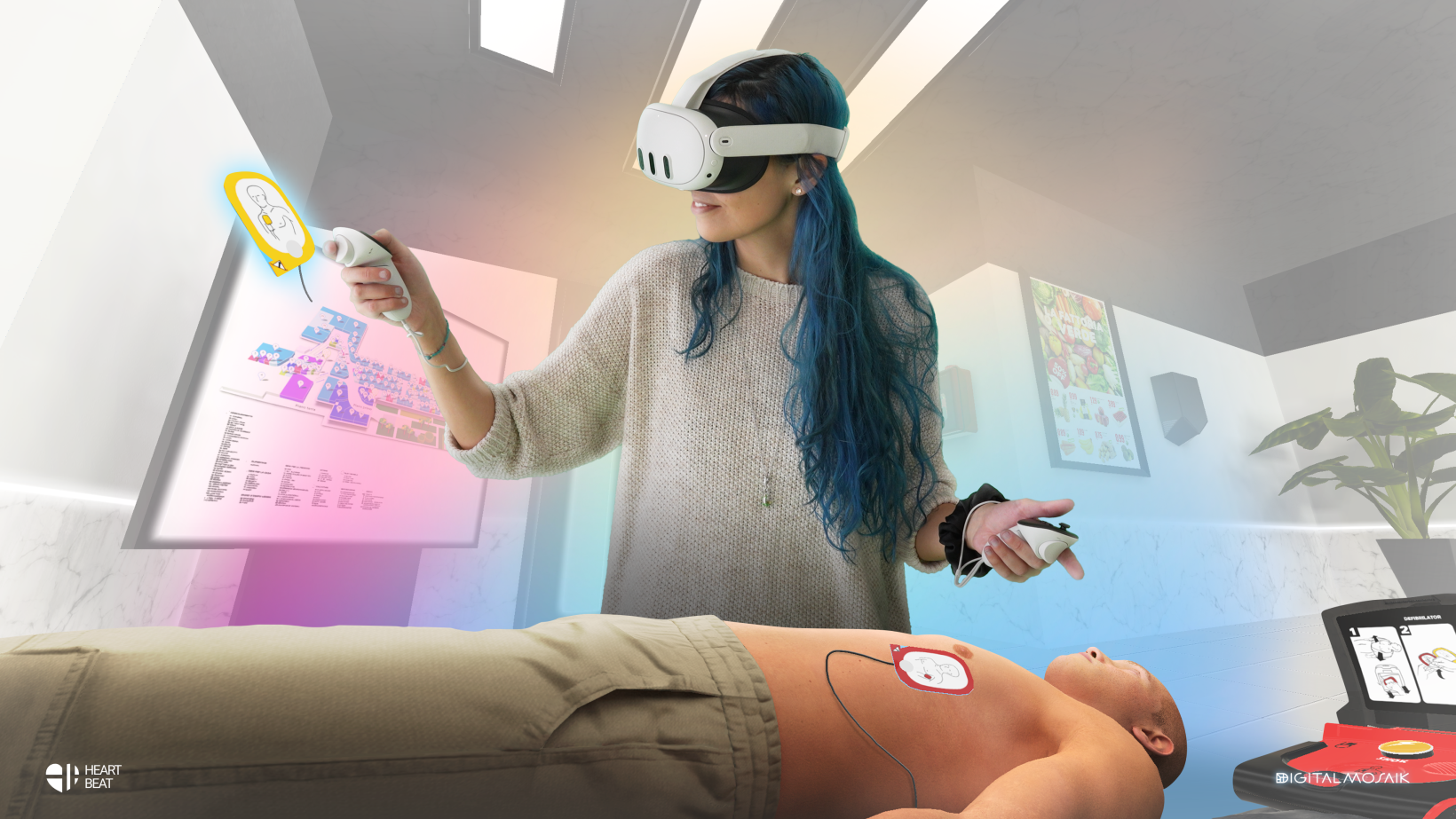
HeartBeat VR
HeartBeat VR&AI SRL
Professional and lay rescuers in cardiopulmonary resuscitation (CPR) practices.
Project TypeVirtual Reality – A platform with digitized and simulated models of CPR (cardiopulmonary resuscitation) procedures, utilizing virtual medical equipment such as AED (automated external defibrillator).
ScopeHealthcare
A virtual reality experience designed to strengthen CPR (cardiopulmonary resuscitation) skills, based on a protocol that includes a sequence of chest compressions, artificial ventilation, and the use of an AED (automated external defibrillator).
Identify a training approach for CPR (cardiopulmonary resuscitation) with AED (automated external defibrillator) that reinforces classroom learning by allowing practice in realistic, high-stress scenarios, providing objective data on acquired skills to assess the competence level achieved while also measuring the effectiveness of the training.
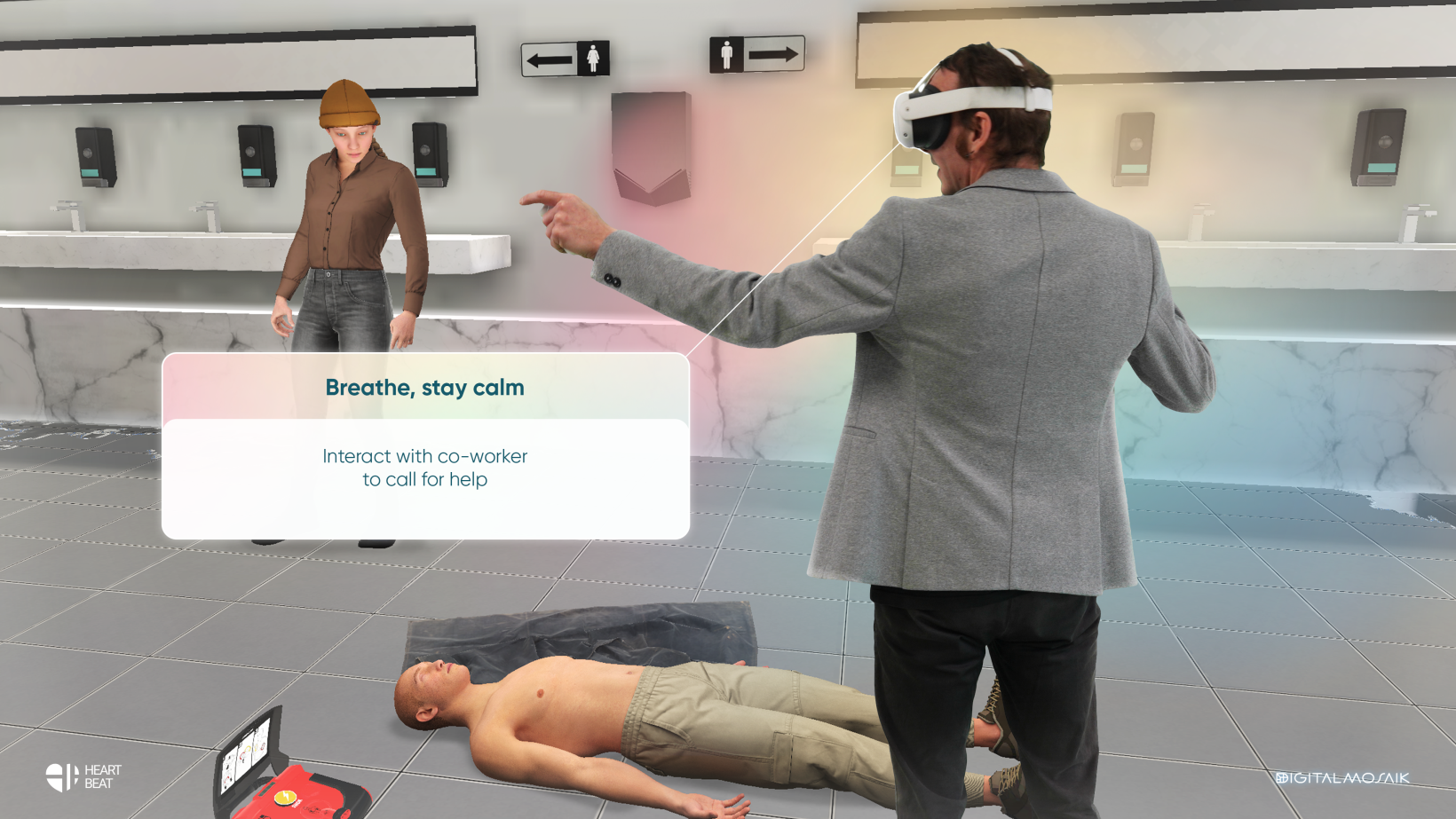
A virtual reality experience for CPR (cardiopulmonary resuscitation) training with AED (automated external defibrillator), structured into three distinct and immersive high-realism scenarios with two learning modes: the tutorial, designed to guide and reinforce theoretical training, and the training mode, aimed at testing and assessing acquired skills, including both soft and hard skills.
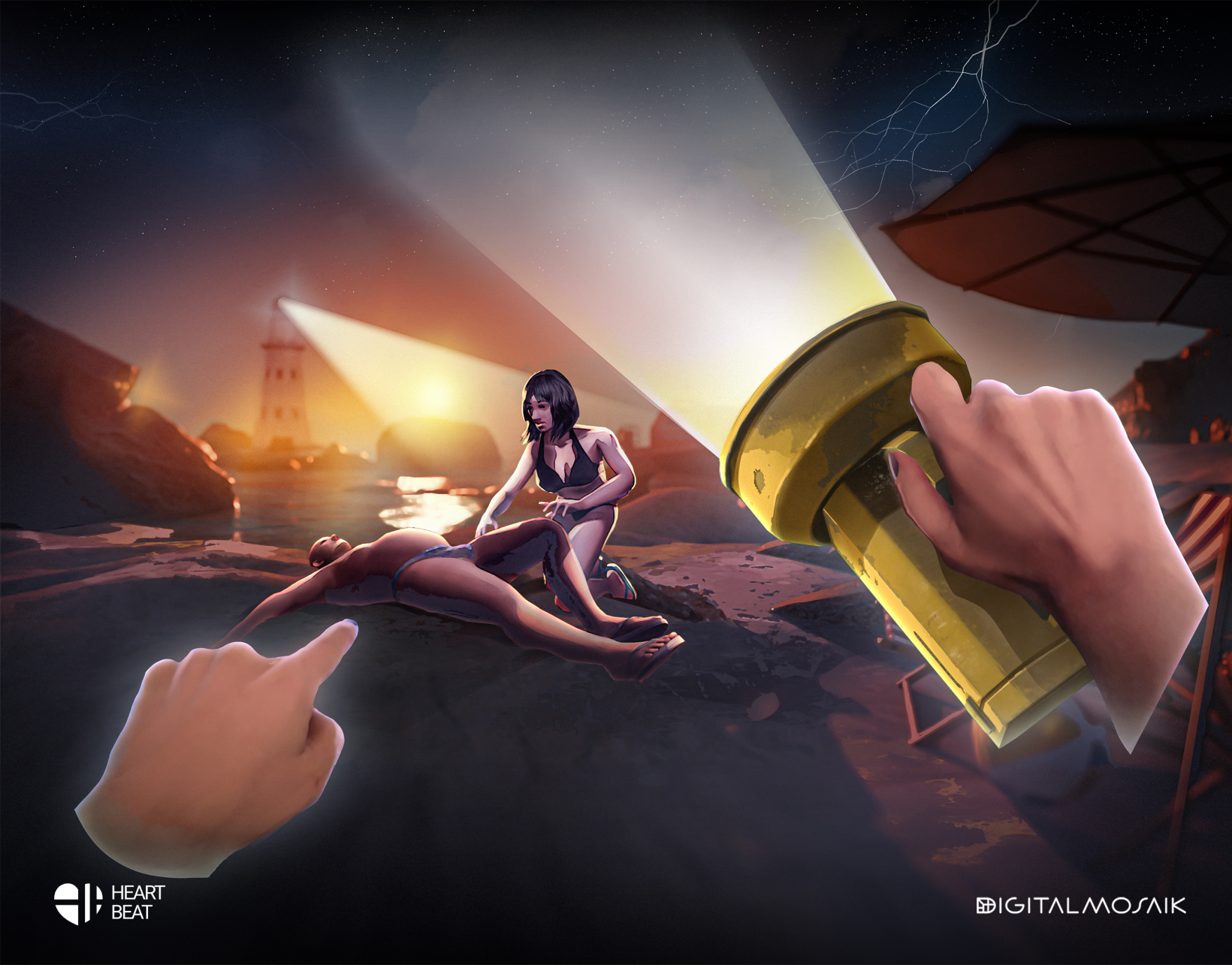
The project
The 'HeartBeat VR' project offers both professional and lay first aid trainers and trainees an advanced digitalization of cardiopulmonary resuscitation (CPR) procedures, positioning HeartBeat VR&AI SRL as a pioneer in using immersive technology for first aid training.
Through virtual environment simulations, users can train with a virtual AED (automated external defibrillator), facing cardiac arrest scenarios in high-stress situations set in faithfully recreated real-life spaces. These scenarios help develop both technical and soft skills, making the level of preparedness objective and measurable. The experience monitors behavioral choices and practical abilities, using A/B response tests and technology to assess the correct application of procedures, providing immediate and personalized feedback.
This approach allows real-time error correction and offers a final overall assessment for each training session. Users receive a final score, helping measure their level of competence with the option to repeat the training until mastery is achieved. Additionally, trainers can evaluate the educational effectiveness through a safe, repeatable, and measurable tool that enhances traditional learning by enabling hands-on practice.
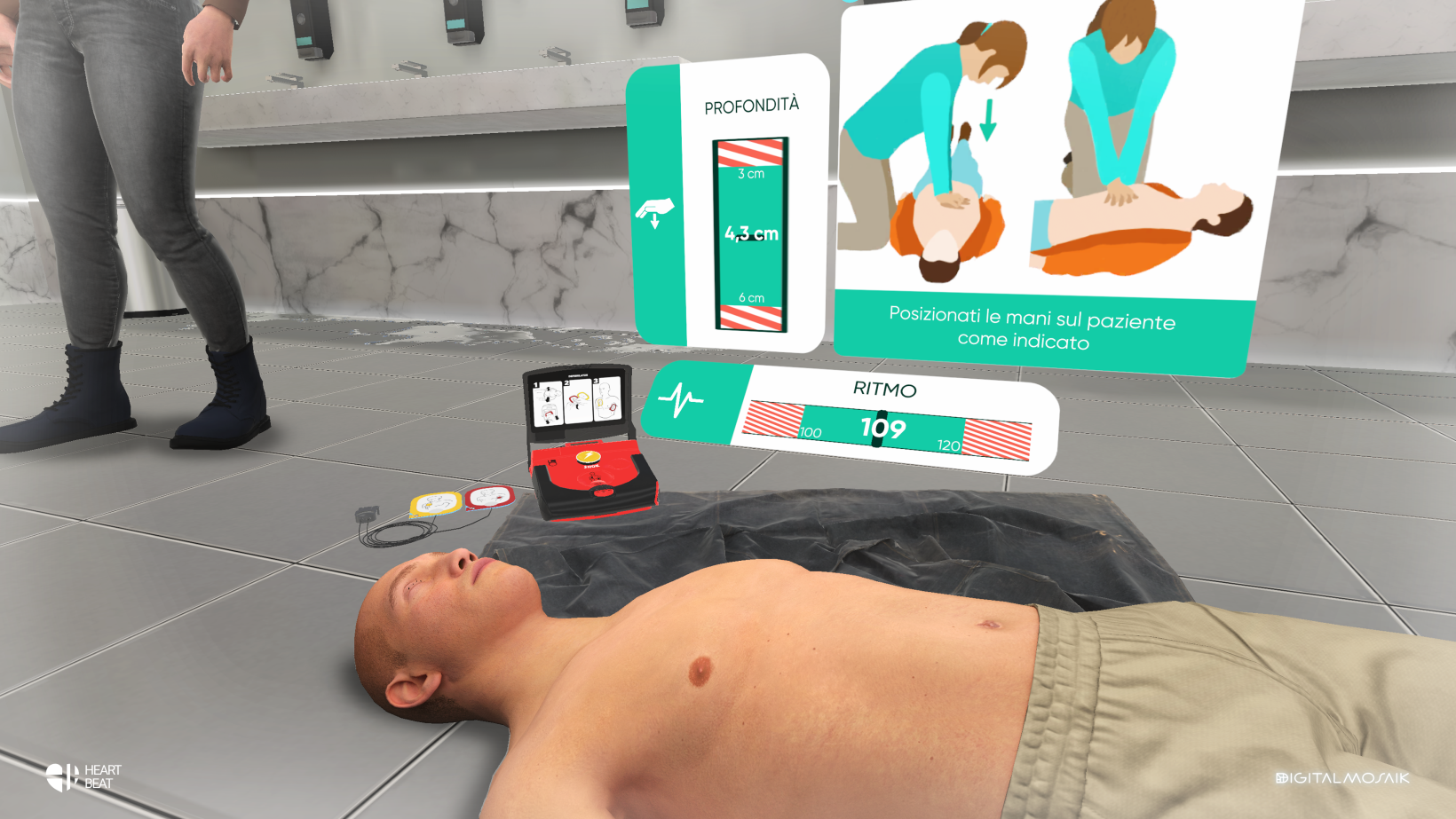
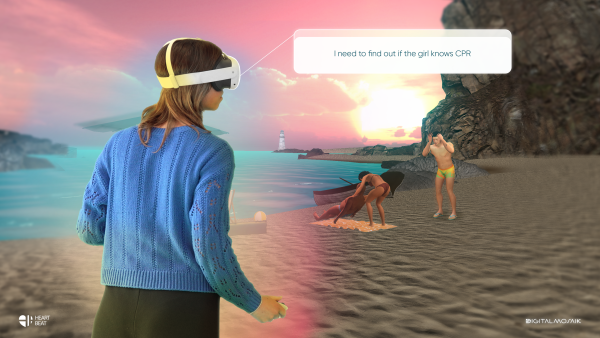
Inside the experience
By wearing the headset, users access an interactive 3D (6DoF) virtual platform to explore rescue procedures and medical equipment. They can choose from various scenarios, such as a bathroom, a soccer field, or a beach, and either follow a tutorial to review theoretical training or engage in an assessment-based training to evaluate their acquired skills.
Interaction is facilitated through the "Leap Motion" device, which tracks hand movements. The evaluation includes theoretical questions and an analysis of chest compressions performed on a real mannequin, monitored within the VR experience through the headset. This setup allows users to feel realistic resistance and fully immerse themselves in the experience, while the VR application assesses and corrects their movements. At the end of the session, a final score is provided, enabling users to repeat the tutorial or training until they achieve optimal performance.
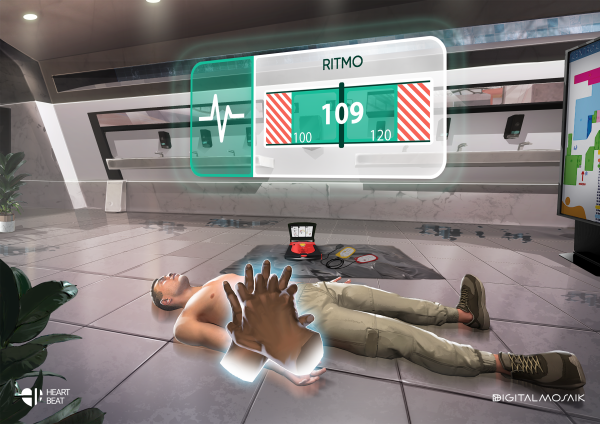
About the design
The HeartBeat VR experience offers realistic interaction in a virtual environment with accurately recreated medical equipment. By integrating the real and virtual worlds—such as using a mannequin representing the digital rescue victim—and highly realistic scenarios simulating high-stress situations, it enables users to train both technical and soft skills for managing cardiac arrest emergencies. This approach enhances readiness to act and the ability to handle stress during life-saving procedures.